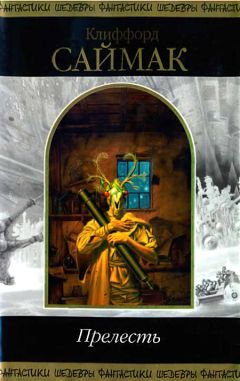Коллектив авторов - Звездные войны. Психология киновселенной

Помощь проекту
Звездные войны. Психология киновселенной читать книгу онлайн
Dedeke, A. (2013). A cognitive-intuitionist model of moral judgment. Journal of Business Ethics, 126(3), 437–457.
Glut, D. F. (1980). The Empire strikes back. New York, NY: Ballantine.
Greene, J. D. (2015). The rise of moral cognition. Cognition, 135(1), 39–42.
Greene, J. D., Nystrom, L. E., Engell, A. D., Darley, J. M., & Cohen, J. D. (2004). The neural bases of cognitive conflict and control in moral judgment. Neuron, 44(2), 389–400.
Greene, J. D., Sommerville, R. В., Nystrom, L. E., Darley, J. M., & Cohen, J. D. (2001, September 14). An fMRI investigation of emotional engagement in moral judgment. Science, 293(5537), 2105–2108.
Haidt, J. (2001). The emotional dog and its rational tail: A social intuitionist approach to moral judgment. Psychological Review, 108(4), 814–834.
Kirkebøen, G., Vasaasen, E., &Teigen, К. H. (2013). Revisions and regret: The cost of changing your mind. Journal of Behavioral Decision Making, 26(1), 1–12.
Koop, G. J. (2013). An assessment of the temporal dynamics of moral decisions. Judgment and Decision Making, 8(5), 527–539.
Lammers, J., & Stapel, D. A. (2009). How power influences moral thinking. Journal of Personality and Social Psychology, 97(2), 279–289.
La Rosa, A. O., & Mir, J. R. (2013). On the relationships between disgust and morality: A critical review. Psicothema, 25(2), 222–226.
Lucas, B. J., & Livingston, R. W. (2014). Feeling socially connected increases utilitarian choices in moral dilemmas. Journal of Experimental Social Psychology, 53(1), 1–4.
Moore, А. В., Clark, B. A., & Kane, M. J. (2008). Who shalt not kill? Individual differences in working memory capacity, executive control, and moral judgment. Psychological Science, 19(6), 549–557.
Palmer, С J., Paton, В., Ngo, Т. T, Thomson, R. H., Hohwy, J., & Miller, S. M. (2013). Individual differences in moral behaviour: A role for response to risk and uncertainty? Neuroethics, 6(1), 97–103.
Sanfey, A. G., Rilling, J. K., Aronson, J. A., Nystrom, L. E., & Cohen, J. D. (2003, June 13). The neural basis of economic decision-making in the Ultimatum Game. Science, 300(5626), 1755–1758.
Starcke, K., Ludwig, A., & Brand, M. (2012). Anticipatory stress interferes with utilitarian moral judgment. Judgment and Decision Making, 7(1), 61–68.
Stern, M., & Hidalgo, P. (1996). Galaxy guide 3: The Empire strikes back. Honesdale, PA: West End Games.
Wallach, W. (2010). Cognitive models of moral decision making. Topics in Cognitive Science, 2(3), 420–429.
15
Dixon, F. A., Lapsley, D. K., & Hanchon, T. A. (2004). An empirical typology of perfectionism in gifted adolescents. Gifted Child Quarterly, 48(2), 95–106.
Pittman, F. (1993/2012). Fathers and sons. Psychology Today: https://www.psychologytoday.com/articles/200910/fathers-and-sons.
Rotter, J. B. (1945). Social learning and clinical psychology. New York, NY: Prentice-Hall.
Rotter, J. B. (1966). Generalized expectancies for internal versus external locus of control of reinforcement. Psychological Monographs, 80 (whole no. 609).
Sorotzkin, B. (1985). The quest for perfection: Avoiding guilt or avoiding shame? Psychotherapy, 22(3), 564–571.
Stossel, S. (2014, November/December). A brief history of anxiety: The invention of a modern malaise. Psychotherapy Network: http://www.psychotherapynetworker.org/magazine/recentissues/2014-novdec/item/2573-a-brief-history-of-anxiety.
Tolin, D. (2012). Face your fears: A proven plan to beat anxiety, panic, phobias, and obsessions. Hoboken, NJ: Wiley.
Verhaagen, D. (2010). Therapy with young men: 16–24 year olds in treatment. New York, NY: Routledge.
16
Ball-Rokeach, S. J., Rokeach, M., & Grube, J. W (1984). Great American values test: Influencing behavior & belief through television. New York, NY: Free Press.
Beaver, K. M., Wright, J. P., DeLisi, M., & Vaughn, M. G. (2012). Dopaminergic polymorphisms and educational achievement: Results from a longitudinal sample of Americans. Developmental Psychology, 48(4), 932–938.
Burg, J. M. (2011). The healthy qualities of mindful breathing: Associations with rumination and depression. Cognitive Therapy and Research, 35(2), 179–185.
Cameron, C. D., & Fredrickson, B. L. (2015). Mindfulness facets predict helping behavior and distinct helping-related emotions. Mindfulness, 1–8.
Comings, D. E., Rosenthal, R. J., Lesieur, H. R., et al. (1996). A study of the dopamine D2 receptor gene in pathological gambling. Pharmacogenetics and Genomics, 6(3), 223–234.
Congressional Record (2001, March 28). Roy E. Disney Center for the Performing Arts. Congressional Record, Pt. 4, March 27, 2001, to April 23, 2001, p. 4936. Washington, DC: U. S. Congress.
Conrad, A., Miiller, A., Doberenz, S., Kim, S., Meuret, A. E., Wollburg, E., & Roth, W. T. (2007). Psychophysiological effects of breathing instructions for stress management. Applied Psychophysiology and Biofeedback, 32(2), 89–98.
Dagher, A., & Robbins, T. W. (2009). Personality, addiction, dopamine: Insights from Parkinson's disease. Neuron, 61(4), 502–510.
Dalley, J. W, Fryer, T. D., Brichard, L., Robinson, D. S., Theobald, D. E., et al. (2007). Nucleus accumbens D2/3 receptors predict trait impulsivity and cocaine reinforcement. Science, 315(5816), 1267–1270.
Davidson, R. J., Putnam, K. M., & Larson, C. L. (2000). Dysfunction in the neural circuitry of emotion regulation – a possible prelude to violence. Science, 289(5479), 591–594.
Di Chiara, G., Bassareo, V., Fenu, S., De Luca, M. A., & Spina, L. (2004). Dopamine and drug addiction: The nucleus accumbens shell connection. Neuropharmacology, 47(Supplement 1), 227–241.
Dublin, J. E. (1976). «Beyond» gestalt: Toward integrating some systems of psychotherapy. Psychotherapy, 13(3), 225–231.
Feldman, G., Greeson, J., & Senville, J. (2010). Differential effects of mindful breathing, progressive muscle relaxation, and loving-kindness meditation on decentering and negative reactions to repetitive thoughts. Behaviour Research and Therapy, 48(10), 1002–1011.
Festinger, L. (1957). A theory of cognitive dissonance. Stanford, CA: Stanford University Press.
Gratz, K. L., Rosenthal, M. Z., Tull, M. T, Lejuez, С W, & Gunderson, J. G. (2006). An experimental investigation of emotion dysregulation in borderline personality disorder. Journal of Abnormal Psychology, 115(4), 850–855.
Haney, C, Banks, W. C, & Zimbardo, P. G. (1973). Study of prisoners and guards in a simulated prison. Naval Research Reviews, 9, 1–17.
Hayes, S. C, Wilson, K. G., Gifford, E. V., Follette, V. M., & Strosahl, K. (1996). Experiential avoidance and behavioral disorders: A functional dimensional approach to diagnosis and treatment. Journal of Consulting and Clinical Psychology, 64(6), 1152–1168.
Hearne, K. (2015). Star Wars: Heir to the Jedi. New York, NY: Del Rey.
Hogan, K., & Speakman, J. (2006). Covert persuasion: Psychological tactics and tricks to win the game. Hoboken, NJ: Wiley.
Homer, P. M., & Kahle, L. R. (1988). A structural equation test of the value-attitude-behavior hierarchy. Journal of Personality and Social Psychology, 54(4), 638–646. Israel,S.,Weisel,O.,Ebstein,R.P.,&Bornstein,G.(2012). Oxytocin,butnotvasopressin, increases both parochial and universal altruism. Psychoneuroendocrinology, 37(8), 1341–1344.
Jung, С G. (1937/1973). Letter to Kendig Cully: 25 September 1937. In G. Adler & A. Jaffe (Eds.), Letters of С G. Jung, 1906–1950 (p. 237). London, UK: Routledge. Kim, S., Roth, W T, & Wollburg, E. (2015). Effects of therapeutic relationships, expectancy, and credibility in breathing techniques for anxiety. Bulletin of the Menninger Clinic, 79(2), 116–130.
Lucerno, J. (2005). Star Wars: Dark Lord: The rise of Darth Vader. New York, NY: Del Rey.
Marshall-Berenz, E. С, Vujanovic, A. A., Bonn-Miller, M. O., Bernstein, A., & Zvolensky, M. J. (2010). Multimethod study of distress tolerance and PTSD symptom severity in a trauma-exposed community sample. Journal of Traumatic Stress, 23(5), 623–630.
Milgram, S. (1963). Behavioral study of obedience. Journal of Abnormal and Social Psychology, 67(4), 371.
Nock, M. K., & Mendes, W. B. (2008). Physiological arousal, distress tolerance, and social problem-solving deficits among adolescent self-injurers. Journal of Consulting and Clinical Psychology, 76(1), 28–38.
Schwartz, C, Meisenhelder, J. В., Ma, Y., & Reed, G. (2003). Altruistic social interest behaviors are associated with better mental health. Psychosomatic Medicine, 65(5), 778–785.
Stotts, A. L., Vujanovic, A., Heads, A., Suchting, R., Green, С. E., & Schmitz, J. M. (2014). The role of avoidance and inflexibility in characterizing response to contingency management for cocaine use disorders: A secondary profile analysis. Psychology of Addictive Behaviors. Advance online publication http://dx.doi.org/10.1037/adb0000011.
Stover, M. W. (2005). Star Wars: Episode III: Revenge of the Sith. London, UK: Century.
Swartz, J. R., Knodt, A. R., Radtke, S. R., & Hariri, A. R. (2015). A neural biomarker of psychological vulnerability to future life stress. Neuron, 85(3), 505–511.
Tetlock P. E. (1989). Structure and function in political belief systems. In A. R. Pratkanis, S. J. Breckler, & A G. Greenwald (Eds.), Attitude structure and function (pp. 129–151). Hillsdale, NJ: Erlbaum.
Tomer, R., Goldstein, R. Z., Wang, G. J., Wong, C, & Volkow, N. D. (2008). Incentive motivation is associated with striatal dopamine asymmetry. Biological Psychology, 77(1), 98–101.
Volkow, N. D., Wang, G. J., Telang, F., Fowler, J. S., Logan, J., Childress, A. R., Jayne, M., Ma, Y. & Wong, C. (2006). Cocaine cues and dopamine in dorsal striatum: Mechanism of craving in cocaine addiction. Journal of Neuroscience, 26(24), 6583–6588.
Vowles, K. E., & McCracken, L. M. (2008). Acceptance and values-based action in chronic pain: A study of treatment effectiveness and process. Journal of Consulting and Clinical Psychology, 76(3), 397–407.
Wallmark, E., Safarzadeh, K., Daukantaite, D., & Maddux, R. E. (2013). Promoting altruism through meditation: An 8-week randomized controlled pilot study. Mindfulness, 4(3), 223–234.
Wulfert, E., Block, J. A., Santa Ana, E., Rodrigues, M. L., & Colsman, M. (2002). Delay of gratification: Impulsive choices and problem behaviors in early and late adolescence. Journal of Personality, 70(4), 533–552.
Young, J. S. (2010). Breathwork as a therapeutic modality: An overview for counselors. Counseling and Values, 55(1), 113–125.
Zimbardo, P. G. (1971, October 25). The psychological power and pathology of imprisonment. A statement prepared for the U. S. House of Representatives Committee on the Judiciary, Subcommittee No. 3: Hearings on Prison Reform, San Francisco.
Zimbardo, P. (2007). The Lucifer effect: Understanding how good people turn evil. New York, NY: Random House.
Файлы силы
Baron-Cohen, S. (2012). The science of evil: On empathy and the origins of cruelty. New York, NY: Basic.
Buckels, E. E., Jones, D. N., & Paulhus, D. L. (2013). Behavior confirmation of everyday sadism. Psychological Science, 24(11), 1–9.
Chabrol, H., Van Leeuwen, N., Rodgers, R., & Sejourne, N. (2009). Contributions of psychopathic, narcissistic, Machiavellian, and sadistic personality traits to juvenile delinquency. Personality and Individual Differences, 47, 734–739.
Crispin, A. C. (1997). The paradise snare (The Han Solo trilogy, #1). New York: Bantam.
Hawthorne, J. W. (1932). A group test for the measurement of cruelty-compassion: A proposed means of recognizing potential criminality. Journal of Social Psychology, 3,189–211. Query Note: For Jakobwitz, S., & Egan: Do we leave quotes around "dark triad?"
Jakobwitz, S., & Egan, V. (2006). The dark triad and normal personality traits. Personality and Individual Differences, 40, 331–339.
Paulhus, D. L., & Williams, К. M. (2002). The Dark Triad of personality: Narcissism, Machiavellianism, and psychopathy. Journal of Research in Personality, 36, 556–563.
Salgado, J. F., & De Fruyt, F. (2005). Personality in personnel selection. In A. Evers, O. Schmidt-Voskuyl, & N. Anderson (Eds.), Handbook of personnel selection (pp. 174–198). Oxford: Blackwell.
Stead, R., & Fekken, G. C. (2014). Agreeableness at the core of the dark triad of personality. Individual Differences Research, 12(4-A), 131–141.
Глава 5 17
American Psychiatric Association. (2013). Diagnostic and statistical manual of mental disorders (DSM-5) (5th ed.). Washington, DC: American Psychiatric Association.
Bergen, D. (2008). Human development: Traditional and contemporary theories. Upper Saddle River, NJ: Pearson.
Cleary, T. (2009). Training the samurai mind: A bushido sourcebook. Boston, MA: Shambhala.
Frankl, V. (1992). Man's search for meaning: An introduction to logotherapy. Boston, MA: Beacon.
Gladwell, M. G. (2013). David and Goliath: Underdogs, misfits, and the art of battling giants. New York, NY: Little, Brown.
Kaminski, M. (2008). The secret history of Star Wars. Kingston, Ontario, Canada: Legacy.
Kohlberg, L. (1973). Collected papers on moral development and moral education. Cambridge, MA: Harvard University.
Peterson, C, & Seligman, M. E. P. (2004). Character strengths and virtues: A handbook and classification. New York: Oxford University Press and Washington, DC: American Psychological Association.
Ratti, O., & Cleary, T. (1999). The code of the samurai: A modern translation of the Bushido Shoshinshu of Taira Shigesuke. North Clarendon, VT: Tuttle.
Richie, D. (1999). The films of Akira Kurosawa (3rd ed.). Berkeley, CA: University of California Press.
Seligman, M. E. P. (2002). Authentic happiness. New York, NY: Free Press.
Seligman, M. E, P. (2006). Learned optimism: How to change your mind and your life. New York, NY: Knopf.
Seligman, M. E. P. (2007). What you can change and what you can't. New York, NY: Knopf.
Tabibnia, G., & Lieberman, M. D. (2007). Fairness and cooperation are rewarding: Evidence from social cognitive neuroscience. Annals of the New York Academy of Science, 1118(1), 90–101.
Vandello, J. A., Goldschmied, N. P., & Richards, D. A. R. (2007). The appeal of the underdog. Personality and Social Psychology Bulletin, 33(12), 1603–1616.
Wong, P. T. P., & Tomer, A. (2001). Beyond terror and denial: The positive psychology of death acceptance. London, UK: Routledge.
18
Allen, T. D., Eby, L. T., Poteet, M. L., Lentz, E., & Lima, L.(2004). Career benefits associated with mentoring for proteges: A meta-analysis. Journal of Applied Psychology, 89(1), 127–136.
Baugh, S. G., & Fagenson-Eland, E. A. (2007). Formal mentoring programs: A "poor cousin" to informal relationships? In B. R. Ragins & К. E. Kram (Eds.), The handbook of mentoring at work: Theory, research, and practice (pp. 249–271). Thousand Oaks, CA: Sage.
Bishop, P. (1999). Jung in context: A reader. London, UK: Psychology Press.
Blake-Beard, S. D., O'Neill, R. M., & McGowan, E. (2007). Blind dates? The importance of matching in successful formal mentoring relationships. In B. R. Ragins & К. E. Kram (Eds.), The handbook of mentoring at work: Theory, research, and practice (pp. 617–632). Thousand Oaks, CA: Sage.
























